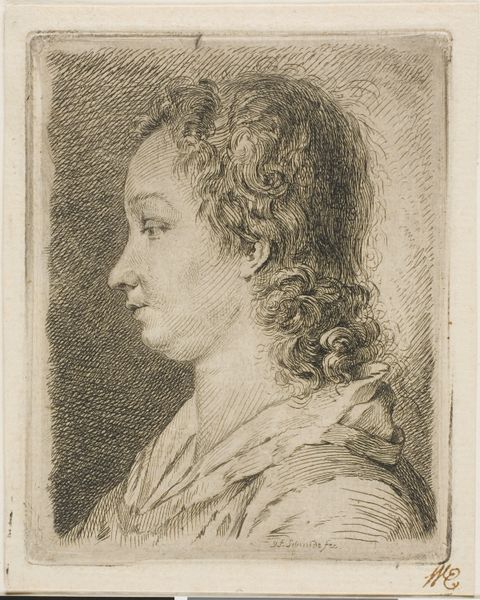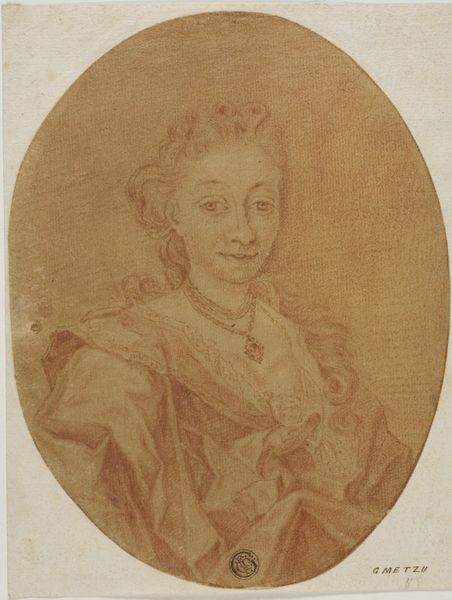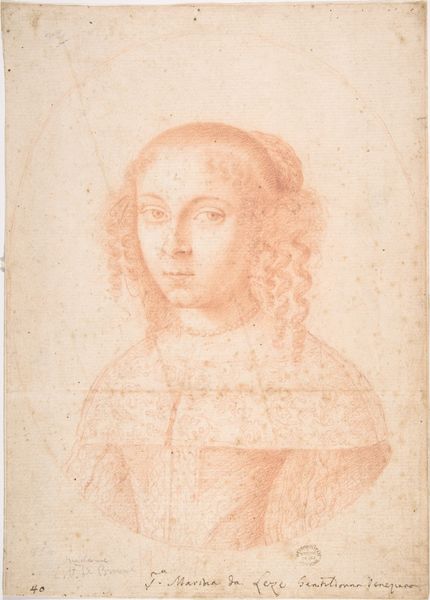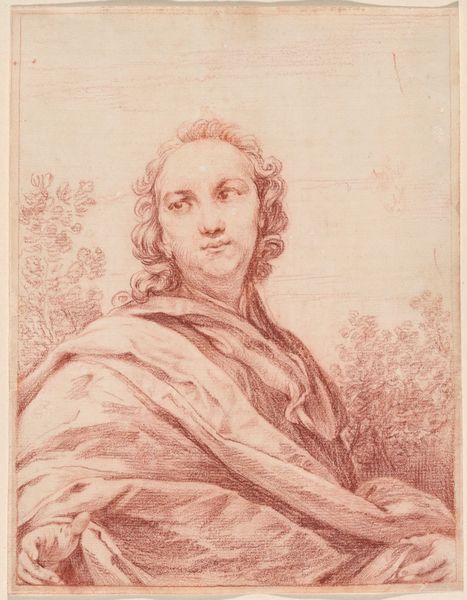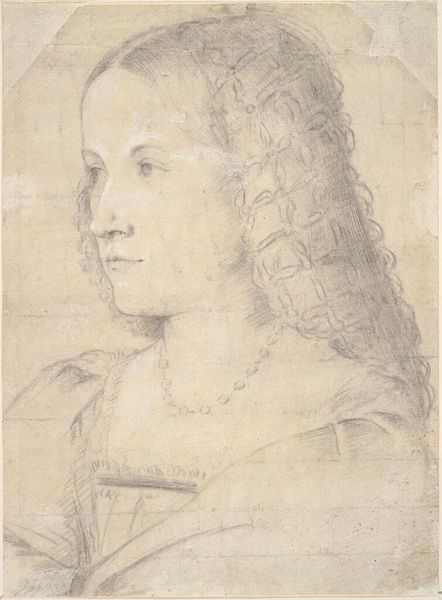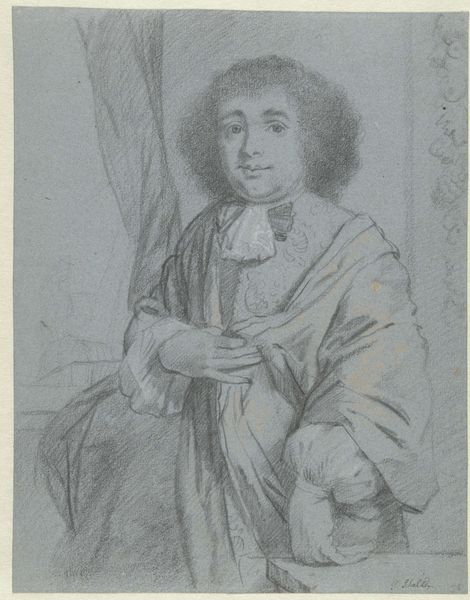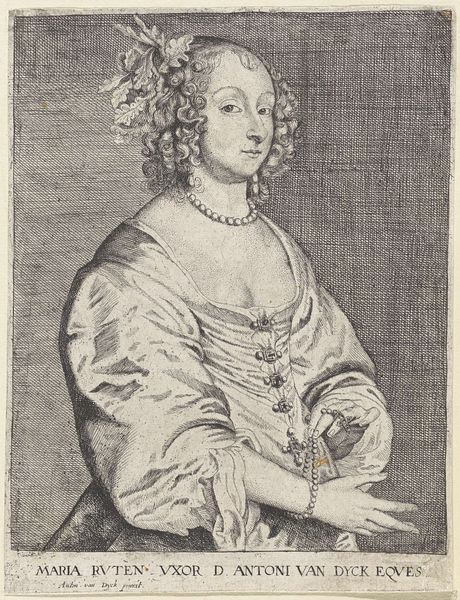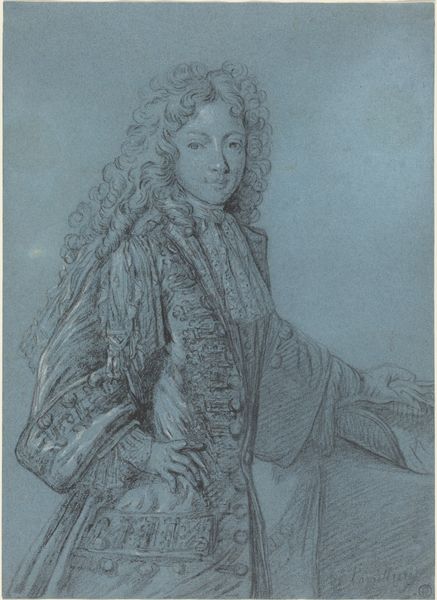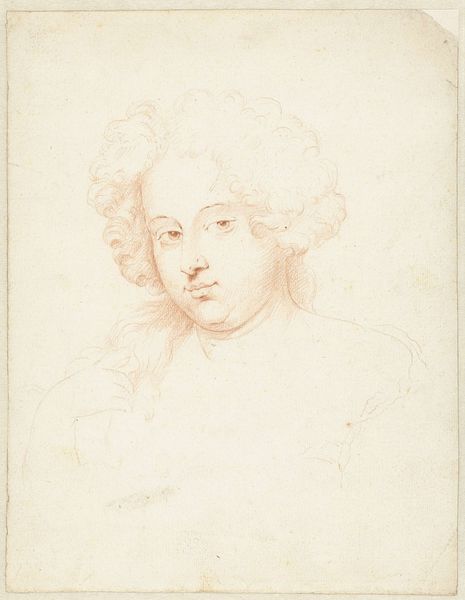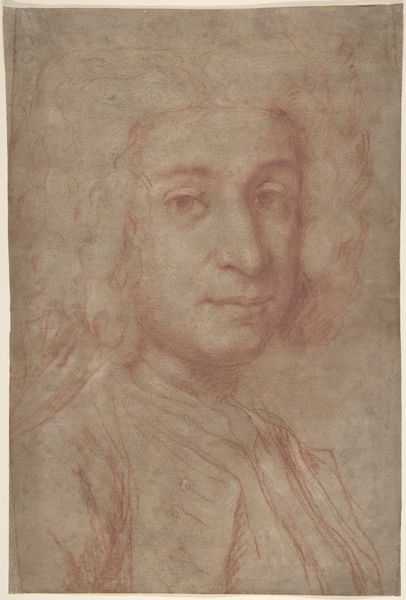
drawing, paper, chalk, graphite, pen
#
portrait
#
drawing
#
baroque
#
figuration
#
paper
#
chalk
#
line
#
graphite
#
pen
Copyright: Public Domain
Curator: This delicate drawing, executed in pen, graphite, and chalk on paper, is entitled “Portrait of Maddalena Corvina.” It was created around 1636 by Claude Mellan, a significant figure in Baroque portraiture. Editor: It's charming, isn't it? A quiet dignity about her. I'm immediately drawn to the subtle tonal variations he achieves with what seems like such simple means. The luminosity is striking, especially around her face. Curator: Mellan's work often emphasized line, and here we see him building form primarily through precisely drawn strokes, varying their pressure to suggest volume and light. This speaks to the evolving printmaking techniques of the era, which emphasized precision. The lines mimic the burin's incisive cut, even though this isn't a print. Editor: I notice that. And consider how the tight curls framing her face contrast with the smoother texture of her dress. There’s almost a tactile quality to it, created solely through the arrangement of marks on the page. Do you think the relatively simple garments point to a particular social status? Curator: That's a key point to investigate, yes. We can read the clothing, the pearl necklace, and the sitter's self-possessed expression as carefully constructed indicators of status. What social and economic factors would dictate how portraiture functioned for different strata in 17th century Europe? Editor: Beyond the status symbols, her expression draws me in. She possesses an accessible confidence, like she's decided to reveal something to the viewer. It avoids the theatricality that defined many Baroque portraits, something much quieter. Curator: And it's important to recall that this would have been produced within a very particular economic context, perhaps as a preparatory sketch or as a collectible object in its own right for wealthy patrons. Even the paper itself has a history, from the linen rags to the papermaker. Editor: It makes you appreciate the multiple layers embedded in what seems, at first glance, like a simple portrait. All of those histories are locked into Mellan’s strategic combination of lines. Curator: Indeed. Examining both its aesthetic qualities and the material conditions that shaped its creation gives us a much richer understanding of “Portrait of Maddalena Corvina”. Editor: A truly fascinating peek into a life and time, shaped by material constraints and artistic choices, carefully rendered for our viewing.
Comments
No comments
Be the first to comment and join the conversation on the ultimate creative platform.
